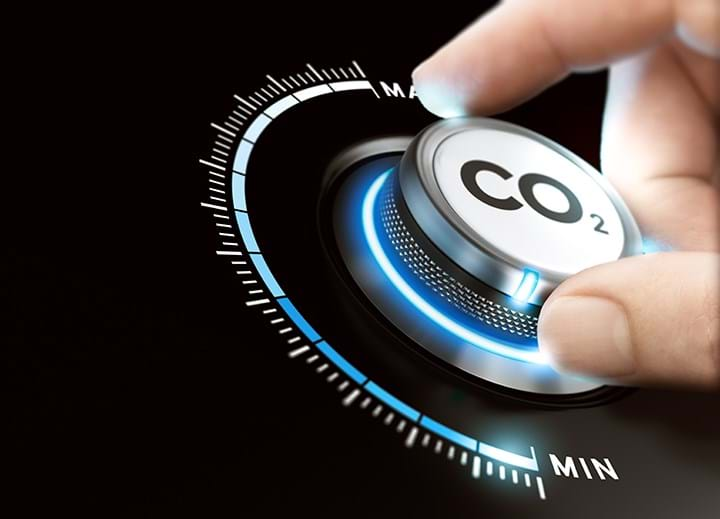Finalists announced for carbon capture XPRIZE

TEN finalists have been announced in the NRG COSIA Carbon XPRIZE which is incentivising companies to develop new solutions for capturing CO2 emissions and transforming them to useful products.
The competition was launched in 2015 and has a two-track structure; one track focuses on testing technology at a coal-fired plant in Wyoming, US, and the other at a natural gas power plant in Alberta, Canada. To reach the finals, the teams had to prove their technology works at pilot scale. The winner will be the company that converts the most CO2 into the highest value products at each track.
The US$20m prize money is split between the two tracks, and each of the ten teams that reached the finals received a share of a US$5m milestone prize. The remaining US$15m will be split between the winners at each track, who will be announced in 2020.
Breathe (Bangalore, India)
The Breathe team is identifying the best catalyst for use in artificial photosynthesis of CO2 to convert it into methanol, which is an important feedstock and fuel.
C4X (Suzhou, China)
C4X is using CO2 to produce methyl alcohol and ethylene glycol, along with bio-composite foamed plastics.
Carbon Capture Machine (Aberdeen, Scotland)
CCM is a spin-out company from the University of Aberdeen that is turning carbon into building materials for use in construction projects.
It dissolves CO2 flue gas directly into slightly alkaline water which converts it to carbonate ions. This carbonate solution is reacted with calcium and magnesium brines, which can be acquired from sources such as waste desalination brine, to produce precipitated carbon carbonate (PCC) and precipitated magnesium carbonate respectively (PMC).
PCC is used in paper making, plastics, paints, adhesives and has the potential to be used in cement and concrete. PMC is added to cement to give it superior thermal and acoustic insulating properties.
CarbonCure (Darthmouth, Canada)
CarbonCure is making stronger, greener concrete and already has nearly 100 installations in concrete plants across North America. CarbonCure technology can be used with existing concrete production equipment and Portland cement chemistry.
The team uses purified and liquid CO2 that has been captured by local industrial polluters. They inject the CO2 into wet concrete which reacts with water to form carbonate ions. The ions then react with calcium to form solid calcium carbonate minerals (limestone). These calcium carbonate nanoparticles increase the strength of the concrete by around 10% for ready-mixed concrete. This means that 5–8% less cement is needed in the concrete while still retaining the same strength. The production of cement accounts for around 5% of global CO2 emissions so reducing the amount of cement used in concrete is essential to reduce emissions.
Carbon Upcycling UCLA (Los Angeles, US)
Carbon Upcycling UCLA is manufacturing a concrete-equivalent material dubbed CO2NCRETE, which is made into LEGO-like building components that accelerate onsite assembly and offer more flexibility in construction projects. The CO2 is embedded via the mineralisation into limestone. The CO2NCRETE concrete is stronger than traditional concrete, and only has half the CO2 footprint of ordinary concrete.
C2CNT (Ashburn, US)
C2CNT is transforming CO2 into hollow nanofibres called carbon nanotubes. The nanotubes have high conductivity, flexibility, and strength, can be used in nanoelectronics, higher capacity batteries, or as carbon composites which are lightweight alternatives to metals. The CO2 is dissolved in a molten carbonate bath and is then split using electrolysis. The resulting carbon is made into a nanotube.
Previously, nanotubes were made by expensive processes such as chemical vapour deposition but the C2CNT method is low cost and directly converts CO2 to nanotubes. This method also provides the most compact form for capturing carbon dioxide.
Carbicrete (Montreal, Canada)
Carbicrete is producing cement-free concrete by using waste from steel production instead of normal cement.
Steel slag is the waste produced in the manufacture of steel. It is composed of calcium silicate so when the CO2 gas is injected into the wet steel slag, calcium carbonate is formed. When combined with an aggregate, this forms the cement-free concrete.
Carbon Upcycling Technology (Calgary, Canada)
CUT is reacting CO2 with solid feedstock such as fly ash and graphite, to create nanoparticles such as nano-fly ash and graphene oxide. These can then be added to different materials to make them stronger or more efficient, for example adding nano-fly ash to concrete increases its strength by 30%. CUT’s nanoparticles can also be used in plastics, ceramic coatings, adhesives, pharmaceutical drug delivery, and energy storage.
CERT (Toronto, Canada)
CERT is using electrocatalytic conversion to convert the CO2 into fuels and feedstocks. The water-splitting anode catalyst is cheap to make and is easily scalable.
Newlight (Huntington Beach, US)
Newlight is using a microorganism-based catalyst to extract the carbon in carbon dioxide and methane and then combine it with hydrogen and oxygen to create a long-chain bioplastic molecule called AirCarbon. Once this has been polymerised, it is converted into a pellet for downstream use. Their inspiration comes from plants and microorganisms, which naturally use greenhouse gases to make useful materials.
Recent Editions
Catch up on the latest news, views and jobs from The Chemical Engineer. Below are the four latest issues. View a wider selection of the archive from within the Magazine section of this site.




